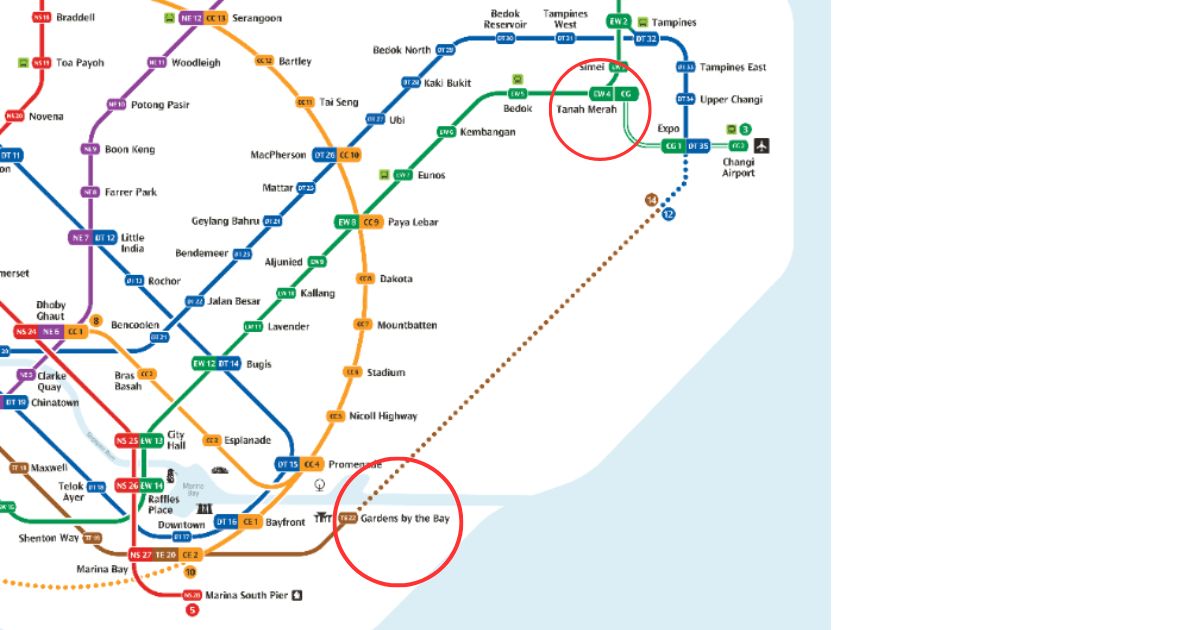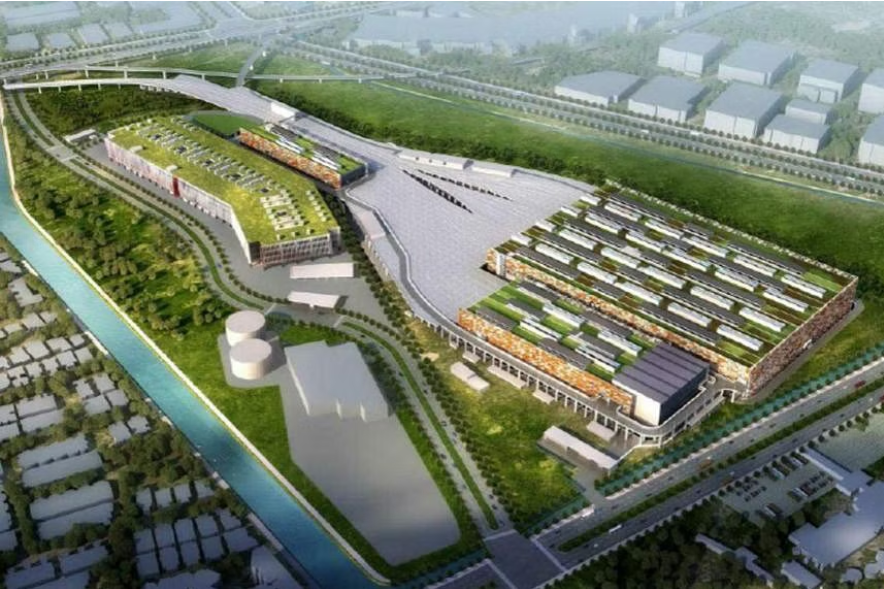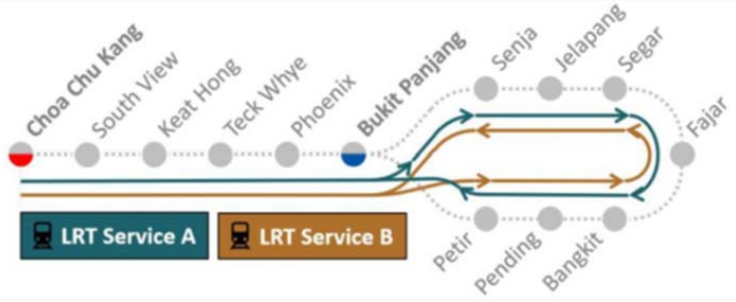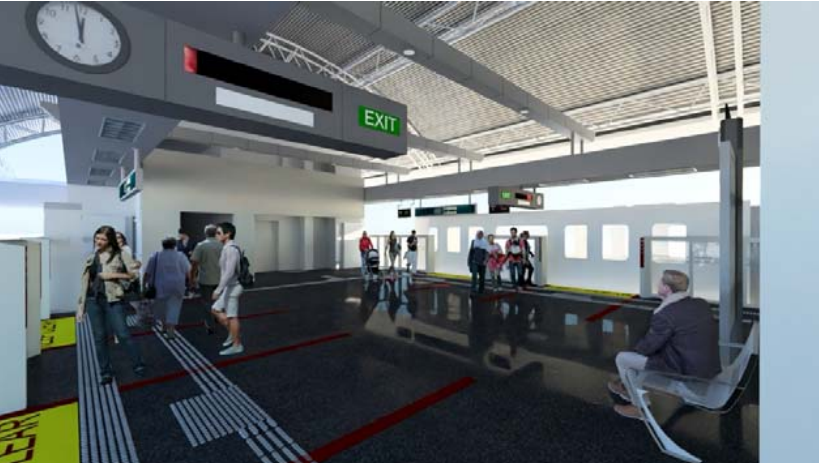You’ve probably heard the new MRT chimes that serve as aural cues for the visually impaired. These were put in place this year, and they’re not the only changes being made to MRTs in 2024.
If you live in the East Coast region and like to go to Marina Bay or Gardens by the Bay for dates or friend outings, you’re probably all too familiar with the arduous journey to get from the East to the location and back.

You either take Grab or brave a long ride on a bus or MRT, and probably have to switch lines or buses a few times too.
The switching of lines and buses is tiring and a waste of time, but the alternative to take Grab is pricey if you do it often enough. It seems like you lose either way.
There’s good news, though: from 23 June 2024, the fourth stage of the Thomson-East Coast Line (TEL) will allow passengers to commute from Tanjong Rhu to Bayshore, making it easier to commute to the East.

The Opening of TEL Stage 4 (TEL4)
The fourth stage comprises seven new MRT stations along a 10.8km stretch, namely Tanjong Rhu, Katong Park, Tanjong Katong, Marine Parade, Marine Terrace, Siglap and Bayshore.
Marine Parade finally gets an MRT station after forever.
These stations will be connected to the first three stages of the TEL, from Woodlands North to Gardens by the Bay.

This means that you can even take a straight train from Woodlands to the east without having to change train.
It will still be faster to switch to the Circle Line at Caldecott and head towards Paya Lebar, but if you have all the time in the world and want to go all the way down South before going East, by all means.
For those who are avid fans of MRTs, you’ll be able to use this as early as 21 June. The seven stations will be available for free use as part of a preview on 21 June, said Transport Minister Chee Hong Tat.
The Land Transport Authority (LTA) said the public can do so between 10am and 9pm on 21 June to familiarise themselves with the stations.
You could be one of the first few passengers on the newest stage of the TEL. And you can go back and forth between the seven stations as many times as you like, for free.
A series of activities will be held in honour of the opening of TEL4. More details of the activity line-up will be available soon on LTA’s social media pages.
Once TEL4 is open, about 235,000 households will be within a 10-minute walk of a TEL station. The line will shorten the travelling time of many commuters, particularly those living in the East Coast region. LTA said commuters can even save up to 50% of travelling time.
For example, a Marine Parade resident will take 20 minutes to reach Shenton Way on the TEL, compared with the current 40 minutes by bus and train.
The opening of TEL4 means that Singapore’s rail network will be over 210km, from the current 200km.
The government aims to expand it to about 360km by the 2030s, putting 80% of households within a 10-minute walk of an MRT station.
In 2026, three more MRT stations will be completed: The Bedok South and Sungei Bedok stations, forming the fifth and final stage of the TEL, as well as the Xilin station on a Downtown Line expansion (DTLe).
The 2.2km extension will link the existing Expo station to Xilin, and then Sungei Bedok, which will be an interchange stop for the TEL and DTL.
Further South, Founders’ Memorial, a TEL station between Gardens by the Bay and Tanjong Rhu, is slated to open when the memorial is ready in 2028.
Additionally, the East Coast Integrated Depot for trains and buses will be ready by 2026. This depot will have connecting tunnels to the TEL and DTL, as well as viaducts from the East-West Line

Previously, the LTA announced that TEL Stage 5 and the depot would be ready in 2025, a year later than the original 2024 deadline, attributing delays to the COVID-19 pandemic. The DTL extension was also due to be ready by 2025.
LTA mentioned the delays have been exacerbated by construction challenges of tunnelling near existing critical infrastructure.
Other than the opening of this line, more information about the MRT network has also been revealed.
Rail Reliability and Performance Incentive
Amid higher maintenance costs, an incentive will be given between 2024 and 2028 for rail operators to maintain rail reliability standards, invest in workers, and improve labour productivity.
The new Rail Reliability and Performance Incentive comes after the Rail Reliability Incentive that ran from 2020 to 2023. Under that scheme, up to $173 million was disbursed to operators each year if they achieved one million mean kilometres before failure (MKBF) or more.
MKBF is an engineering measure of rail reliability. It measures how many kilometres a train travels, on average, before a delay. In 2022, the MKBF of the overall MRT system was 2.09 million.
Singapore’s MRT system has maintained a minimum of one million MKBF since 2019.
On top of meeting one million MKBF or more, and safety and service quality-related qualifying conditions, the new scheme requires operators to minimise long disruptions and achieve productivity improvements.
There were seven major breakdowns lasting more than half an hour in 2022 – the second-highest figure in the past five years.
North East Line Extension (NELe)
The North-East Line will be extended with the opening of Punggol Coast Station by end of this year.
This station will provide a new link for residents in Punggol North, and enable convenient access to the Punggol Digital District and Singapore Institute of Technology Punggol campus.
Works on the station are progressing well; civil and structure works have already been completed. Fitting-out works, testing, and commissioning activities are ongoing as planned. The station is set to open by the end of 2024.
Circle Line Loop to Be Closed
From 2026, the Circle Line will actually be a full, complete circle.
Finally, you can’t really call it Circle Line if it’s not a complete circle, right?
Three new stations – Keppel, Cantonment, and Prince Edward – are set to open between the existing HarbourFront and Marina Bay stations in 2026, “closing the loop” of the Circle Line.
One platform each at Telok Blangah and HarbourFront stations will be closed from January to May this year to facilitate integration works.
Bukit Panjang LRT (BPLRT) Renewal Works
Since 1 December 2019, dual-loop services for the Bukit Panjang LRT have been available only at peak hours on weekday mornings and evenings. From 16 March, dual-loop operations there will also be available from Saturdays between 11am and 1pm, and 5pm and 7pm.
The Bukit Panjang LRT has been operating a single loop from Service B from Petir station to Choa Chu Kang during off-peak hours due to renewal works to improve the line’s reliability. The renewal works have been going on since December 2019.

The line’s performance will be monitored before any decisions to extend the dual-loop service to cover more off-peak hours.
From 22 March to 30 June, rail service on this line will also end an hour earlier, at 10:30pm, on Fridays, Saturdays, and Sundays. This allows for more time to test new vehicles and systems that will be rolled out.
Those affected by the early closures can take buses serving Bukit Panjang and Choa Chu Kang to continue their journeys after 10:30pm. These include Services 67, 171, 920, 922, 960, 963, 972, 972M, 973, 974 and 976.
If you’re going to concerts by Bruno Mars, ITZY, RADWIMPS, or Alexander 23, don’t count on catching the last LRT home. You might want to take bus or a taxi.
The vehicles that will be tested during this period include two new trains slated to begin passenger service in the third quarter of 2024. These two are among 19 trains that will replace the line’s first-generation vehicles that have been used since 1999 (they’re almost 25 years old).
Second-generation trains that were introduced in 2014 are also being upgraded.
Bukit Panjang LRT’s signalling system, which helps to direct rail traffic and keep trains a safe distance apart, is also in the midst of being replaced.
Sengkang-Punggol LRT (SPLRT) Enhancements
Works will commence this month to enhance the platforms of Sengkang LRT station to improve commuter flow, with dedicated stopping locations for each of the four routes plying the station.
New signs and queue markings, as well as a new tactile guiding system (for the visually impaired) will be implemented to make it easier for passengers to board and alight from trains.

The first of the 25 new two-car trains for the SPLRT are expected to arrive in Singapore by the end of this year. These trains will undergo testing before being progressively deployed for passenger service.
The new two-car trains will replace existing one-car trains and some of the existing two-car trains, increasing the overall passenger capacity of the SPLRT.
Hume Station, which will serve existing residential developments along Hume Avenue and provide more convenient access for commuters to the Rail Corridor (Central), is set to be open in 2025.
For this year’s Committee of Supply, the Ministry of Transport (MOT) is focusing on three key areas: Enhancing our Liveability, Living Environment and Livelihoods, by putting people at the heart of what they do.
The MOT will work closely with operators to achieve high reliability while keeping costs sustainable.




